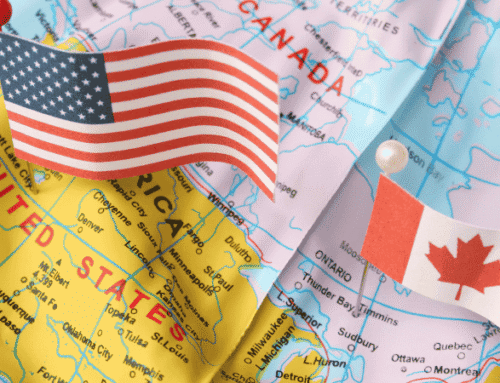More Homebuyers are Using This Simple Trick to Save Tens of Thousands in Mortgage Interest
FREE DOWNLOAD: 10 Costly Mistakes Foreigners Make Buying U.S. Real Estate
💡 More Homebuyers are Using This Simple Trick to Save Tens of Thousands in Mortgage Interest
As mortgage rates in the US continue hover around 7%, homebuyers and investors are getting creative when it comes to affordability.
According to a recent survey of mortgage professionals, one particular strategy gaining traction is the mortgage rate buydown. It’s not a new idea, but it’s making a comeback as buyers look for ways to ease monthly payments without relying on rate cuts that may or may not materialize soon.
Whether you’re house hunting, negotiating with a seller, or weighing closing costs, understanding how interest rate buydowns work could save you thousands.
Related: Foreigners Win Big in US Housing Market
What is a Mortgage Rate Buydown
Simply put, a mortgage rate buydown is where the borrower pays extra interest upfront in exchange for a lower interest rate on their loan.
That helps borrowers to ease monthly payments, which could allow them increase the amount they can borrow and purchase more expensive properties. For investors, it’s a great way to reduce the overall interest on a loan and improve monthly cashflow on their rental properties.
There are different types of buydown, including those that offer a temporarily lower interest rate, and others that offer a permanent rate reduction.
Related: US Mortgage Rates Down Slightly Over Memorial Day Weekend May 26 2025 2025
🧾 What Is a 2-1 Buydown?
A 2-1 buydown is a type of temporary interest rate buydown. It lowers your mortgage rate for the first two years of your loan:
Year 1: Your rate is reduced by 2 percentage points.
Year 2: It’s reduced by 1 percentage point.
Year 3 and onward: Your rate returns to the original agreed-upon level.
Example:
If your mortgage rate is locked at 7%, a 2-1 buydown drops it to:
✅ 5% in Year 1.
✅ 6% in Year 2.
✅ 7% from Year 3 forward.
This can translate into substantial upfront savings. On a $500,000 loan, your monthly payment could be reduced by $600–$700 in the first year alone.
Related: The Top 10 Most and Least Affordable Housing Markets in the US in 2025
🔄 Other Temporary Buydown Structures
While the 2-1 is the most common according to a recent survey of mortgage brokers, there are a few other variations:
3-2-1 Buydown: Rate reduced by 3%, 2%, then 1% over the first three years.
1-0 Buydown: Rate reduced by 1% in year one only.
These options can work well in slower markets, but make sure the cost of the buydown justifies the savings.
📌 What About Permanent Buydowns?
A permanent buydown involves paying discount points at closing to reduce your interest rate for the full loan term.
1 point = 1% of your loan amount paid upfront at closing typically lowers your rate by 0.25% per point.
Example:
If you’re taking a $400,000 loan, one point costs $4,000 and might reduce your rate from 7% to 6.75% permanently.
🧠 This strategy can be ideal if you plan to stay in the home long term – like rental property investors for example – as it saves more over time compared to a 2-1 buydown.
Related: Growing Housing Affordability Gap Creating Golden Opportunity for Investors
🔍 Why Are Rate Buydowns So Popular in 2025?
David Garner, General Manager at Cashflow Rentals – a consultancy that helps foreigners buy investment properties in the US – says that rate buydowns have been at the core of every negotiation so far in 2025.
“In the current market with rising inventory and declining sales, sellers are getting nervous, so we’ve been able to negotiate some pretty decent concessions for our overseas clients. A couple of weeks ago we closed on a $300,000 triplex in Cleveland with a $20,000 seller concession which we used to cover most of our closing costs and buy down the interest rate on our client’s DSCR loan.”
DSCR loans are a mortgage product typically used by real estate investors to purchase rental properties. Standard rates for a 75% loan-to-value DSCR loan range between 7% and 8%.
“We used $9,000 of the concession to buy down the interest rate on a $225,000 loan by 1% – from 7.75% to 6.75% – for the full 30-year term. That saved our client about $54,000 over the life of the loan, and reduced her monthly payments by $152 every month.” Said Garner.
Related: The Best USA Mortgages for Foreign Nationals in 2025
🧩 Who Pays for the Buydown?
1. The Seller
In slower markets, buyers can often negotiate a seller-paid buydown. It’s effectively a concession used to offset affordability challenges without reducing the sale price.
✅ Best-case scenario: You get a lower payment without spending extra up front.
⚠️ Caution: This works best when homes are sitting on the market. In hot markets with bidding wars, it’s a tougher ask.
2. The Builder
Builders are often more willing to fund buydowns because they have more flexibility with pricing and incentives. Some offer buydowns in partnership with preferred lenders to make their inventory more appealing.
🏗️ Pro tip: If you’re rate-sensitive, consider exploring new construction. Builders may offer buydowns as standard or be open to negotiating them.
3. The Buyer (You)
If no one else is offering to cover it, you can always pay for the buydown yourself. But should you?
📉 A temporary buydown you pay for out of pocket may not be the best use of funds. It’s often smarter to:
Increase your down payment
Pay for a permanent rate buydown (using discount points)
Discuss your break-even timeline with your lender to evaluate your best move.
Related: Dave Ramseys Predictions for US Mortgage Rates in 2025
🤔 Is a Buydown Worth It?
✅ Yes, if:
Someone else is paying for it (e.g., seller, builder)
You need breathing room for the first 1–2 years
You expect your income to increase or plan to refinance soon
❌ Maybe not, if:
You’re paying for it yourself and won’t stay long enough to break even
You plan to refinance within a year
Your market is ultra-competitive, and sellers aren’t offering concessions
Related: Hidden Costs of Buying Cheap Investment Property in the USA
🔮 What About Refinancing?
Many buyers considering buydowns hope to refinance once rates drop, and that’s a valid strategy. Most experts are forecasting lower rates by late 2025 or 2026, which would reduce the value of a long-term buydown.
So, if you’re confident that rates will fall – and you can qualify to refinance later – a temporary buydown makes even more sense.
Related: Growing Housing Affordability Gap Creating Golden Opportunity for Investors
📚 Final Thoughts: Should You Consider a Buydown in 2025?
In today’s higher-rate housing market, a rate buydown is one of the few tools buyers and investors can use to lower their monthly payments without waiting for interest rates to fall. If you can get it paid for by a seller or builder, it’s often a no-brainer.
But every scenario is different. Whether you’re buying new construction, negotiating in a cooler market, or planning to refinance in the near future, make sure to run the numbers and talk with a mortgage pro who understands your full financial picture.
Because in 2025, smart mortgage strategies aren’t just about getting into a home – they’re about affording it comfortably.
GROW YOUR WEALTH WITH U.S. REAL ESTATE
Start your US real estate investment journey today, and book a Free 1-2-1 Discovery Call with a member of our senior management team.
“Having personally invested in over 120 US rental properties from overseas, I know the true value of getting the right advice and support.
David Garner – Cashflow Rentals








![USA Property Investment for Foreign Buyers [2025 Guide]](https://cashflowrentals.net/wp-content/uploads/2025/07/USA-Property-Investment-for-Foreigners-Expert-2025-Guide-500x383.png)



